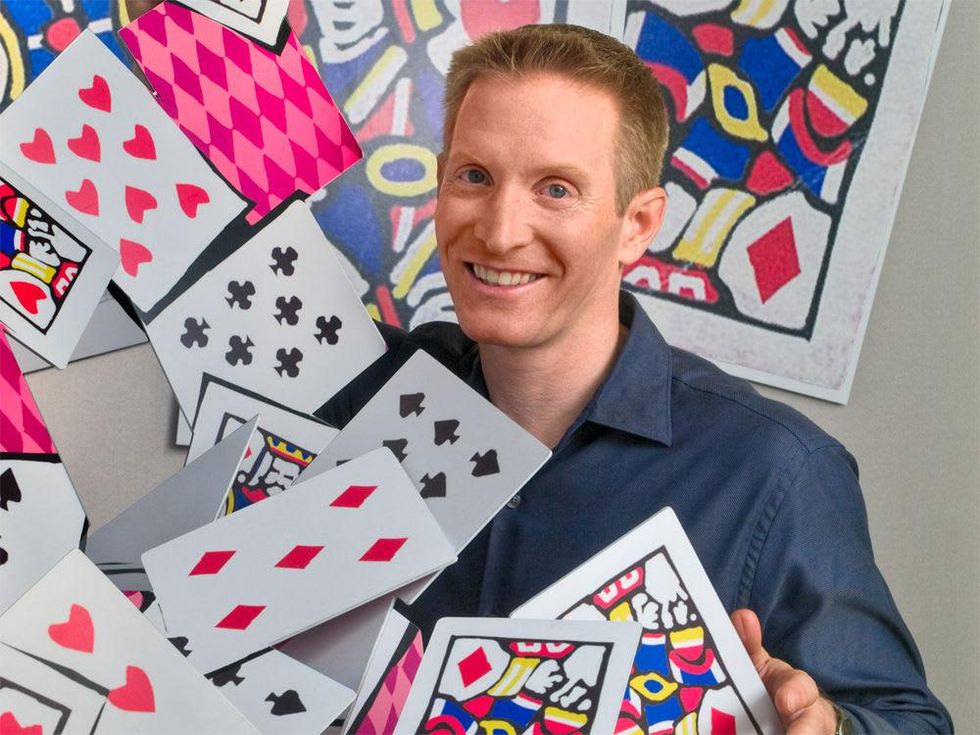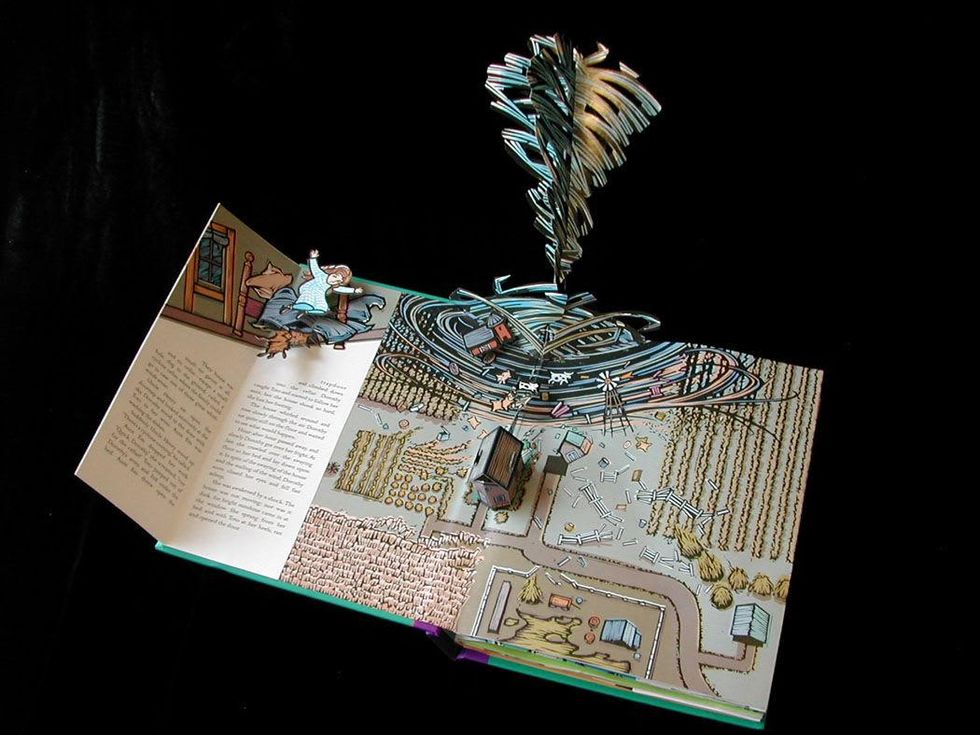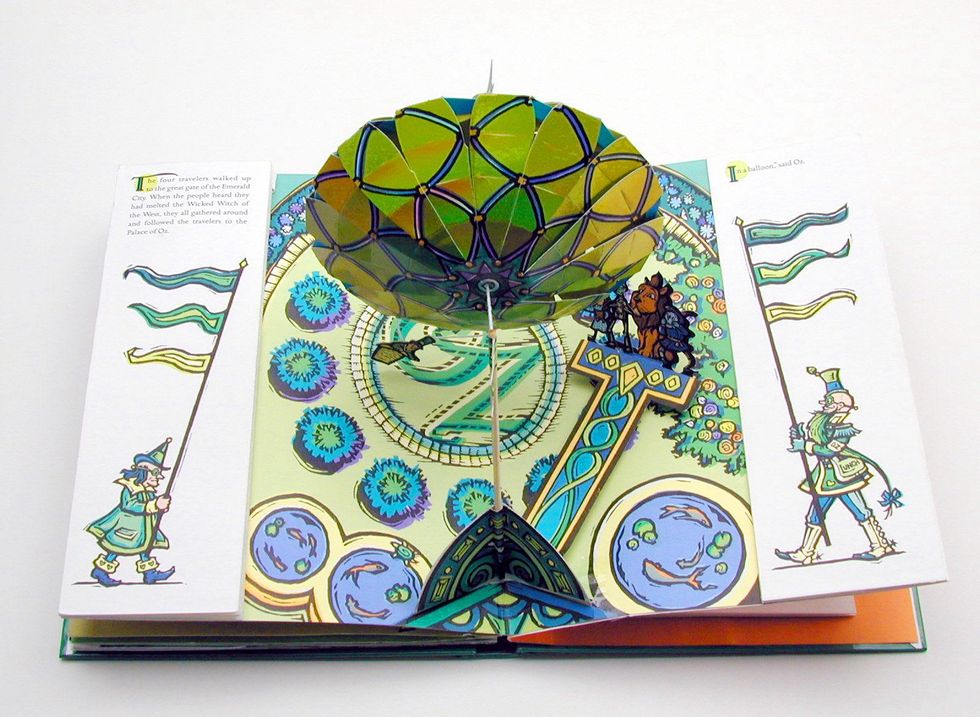POP-UP PALACE
Pop-up prince Robert Sabuda makes magic out of paper at Arts & Letters Live
A piece of paper is never fated to lie flat in the hands of Robert Sabuda. The pop-up artist and “paper engineer” has brought such childhood classics to life as Alice’s Adventures in Wonderland, Beauty and the Beast, The Chronicles of Narnia, The Little Mermaid and Peter Pan, turning magical scenes into intricate works of three-dimensional art that elevate, float and spin.
He began his career by making scenery and backdrops for his mother’s dance school. Ultimately Sabuda moved to New York to study art at Pratt Institute, and a fortuitous internship at Dial Books for Young Readers gave him a backstage look into how a children’s book is actually created. It wasn’t long before he produced his first pop-up, The Christmas Alphabet, in 1994.
Preferring to work by a sketch-and-cut method, he teaches his lucky Arts and Letters Live audience how to create their own pop-ups inspired by another iconic project, The Wizard of Oz.
CultureMap: Can you tell us a little bit about how you got interested in creating pop-ups? It almost seems as though the genre chose you!
RS: Well, I've always been interested in non-traditional or unusual books, even when I was a boy. I distinctly remember when I got my first scratch-n-sniff book. I thought I'd died and gone to heaven! When I was about 7 years old, I saw my first pop-up book and became completely intrigued with movable books. I've been making them, on and off, ever since.
It is definitely a calling. I can't imagine doing anything else except creating children's books.
CM: Can you share the process involved in creating each interactive piece?
RS: Just like with a children's picture book, a story or manuscript comes first. I have to have a compelling story or narrative to tell. After that I begin to sort out the "scenes" of the book, almost like a theater piece or a movie. And then, believe it or not, I start cutting and folding paper to design the pop-up mechanisms.
I rarely make a two-dimensional drawing of pop-up, because there's no guarantee it will actually work in the physical world. After all the pop-ups are designed, I create the color artwork for each pop-up piece. Then everything is sent to the hand-assembly plant to be put together into finished books.
CM: What is the most challenging project or illustration you’ve created so far?
RS: Oftentimes there's at least one pop-up in a book that is SO difficult to create. Like Alice in the storm of playing cards at the end of Alice's Adventures in Wonderland or the gingerbread house at the end of Cookie Count. These were extremely difficult pop-up mechanisms to design.
CM: Is there anything you tried to make that just didn’t work?
RS: That happens all the time! There are so many failures. When illustrating a picture book, the artist can create whatever they want, ANYTHING they want on that 2D surface. But this in not the case with pop-ups. They have to live in a 3D world and therefore must obey the laws of actual physics. Just because I want something to work is no guarantee it will.
CM: Is there any classic that you wanted to bring to life but haven’t yet?
RS: Hmmm. Not yet, but you never know!
CM: Do you find that adults are as interested in your works as children are?
RS: Absolutely. I think the magic of pop-up books is universal, not just for different ages but even different places on the planet. I've traveled to every continent except Antarctica, and at each place the reaction to a pop-up book is always the same. Complete amazement!
CM: Speaking of children, are there any tips to keep them from destroying your books?
RS: I like to think that pop-up books are the ultimate "sharing" books for children and adults. It's a wonderful opportunity to teach a child that some books are truly special and have to be handled with care. I've met many, many parents, teachers and librarians who keep my books on special shelves, only to be enjoyed when shared with someone older.
CM: Tell us about some of your more recent inspirations that have led to illustrations for The Little Mermaid (Little Simon, October 2013).
RS: I've always been inspired to create a pop-up version of The Little Mermaid because it's a story that's so full of wonder and hope. I understand, coming for a tiny town in the Midwest, what it's like to want to go out and see the world and have new experiences. But the challenge with the story of the Little Mermaid is to realize that we don't always get what we want.
CM: What is the next classic on your agenda for reinterpretation?
RS: My next pop-up book is actually an original story! But it still pokes a little fun at classic tales.
CM: Can you tell our readers a little bit about what to expect from your Arts & letters appearance?
RS: Well, the main focus of the event is going to be The Wonderful Wizard of Oz, and that's right up my alley! It's my favorite book and my favorite movie; I just saw Oz the Great and Powerful and liked that too. So I'll talk about my passion for the first American fairy tale, which it really is, and the making of my pop-up book version. I think it's going to be a “great and powerful” evening!
---
Join Robert Sabuda in Horchow Auditorium at the Dallas Museum of Art on March 15, 8:30 pm. Call 214-922-1818 for tickets or purchase online.




